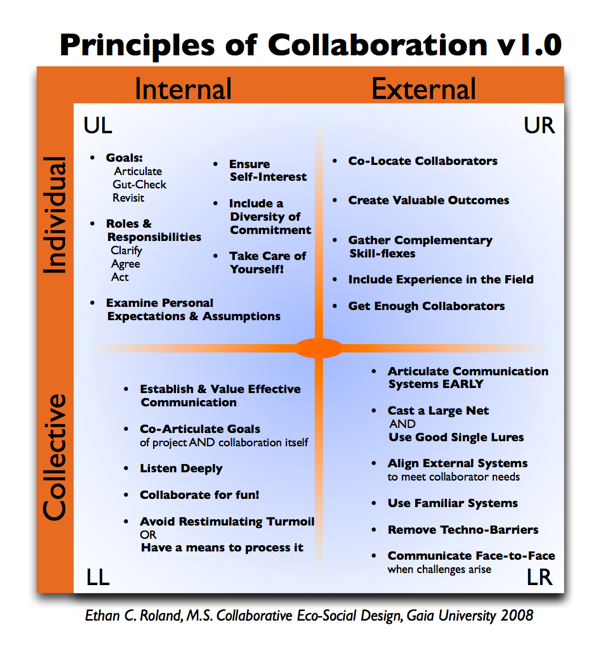The software development world is doing excellent work to move holistic & dynamic design processes forward. My friend and Gaia University colleague Patrick Gibbs pointed me to an ‘Agile Manifesto‘ for software development, whose principles seem very applicable to collaborative eco-social & permaculture design.
You can find the principles here: http://agilemanifesto.org/principles.html
I’ve re-organized them, pulling the most-useful for ecological and social landscape design to the top. I’ve also replaced the word “software” with “outcome” to generalize the ideas. I’ve slightly altered a few of the principles and marked them with an asterisk*. If there is an immediately corresponding permaculture principle, I’ve included it afterwards in (parentheses).
MOST USEFUL FOR DESIGN PROCESS
MOST USEFUL FOR SOCIAL PROCESS
- Build projects around motivated individuals. Give them the environment and support they need, and trust them to get the job done.
- The most efficient and effective method of conveying information to and within a development team is face-to-face conversation.
- At regular intervals, the team reflects on how to become more effective, then tunes and adjusts its behavior accordingly. (Pc Principle: Apply self-regulation and accept feedback)
- The best architectures, requirements, and designs emerge from self-organizing teams.
- Business people and designers must work together daily throughout the project.*
OTHER PRINCIPLES
- Our highest priority is to satisfy the customer through early and continuous delivery of valuable outcomes.
- Deliver working outcomes frequently, from a couple of weeks to a couple of months, with a preference to the shorter timescale.
- Agile processes promote sustainable development. The sponsors, designers, and users should be able to maintain a constant pace indefinitely.*
- Continuous attention to technical excellence and good design enhances agility.
Several of these agile principles map very closely to the Principles of Collaboration I articulated for my Master’s Thesis at Gaia University:
 Fertile ground! what do y’all think? Anybody using similar principles in their design work?
Fertile ground! what do y’all think? Anybody using similar principles in their design work?




